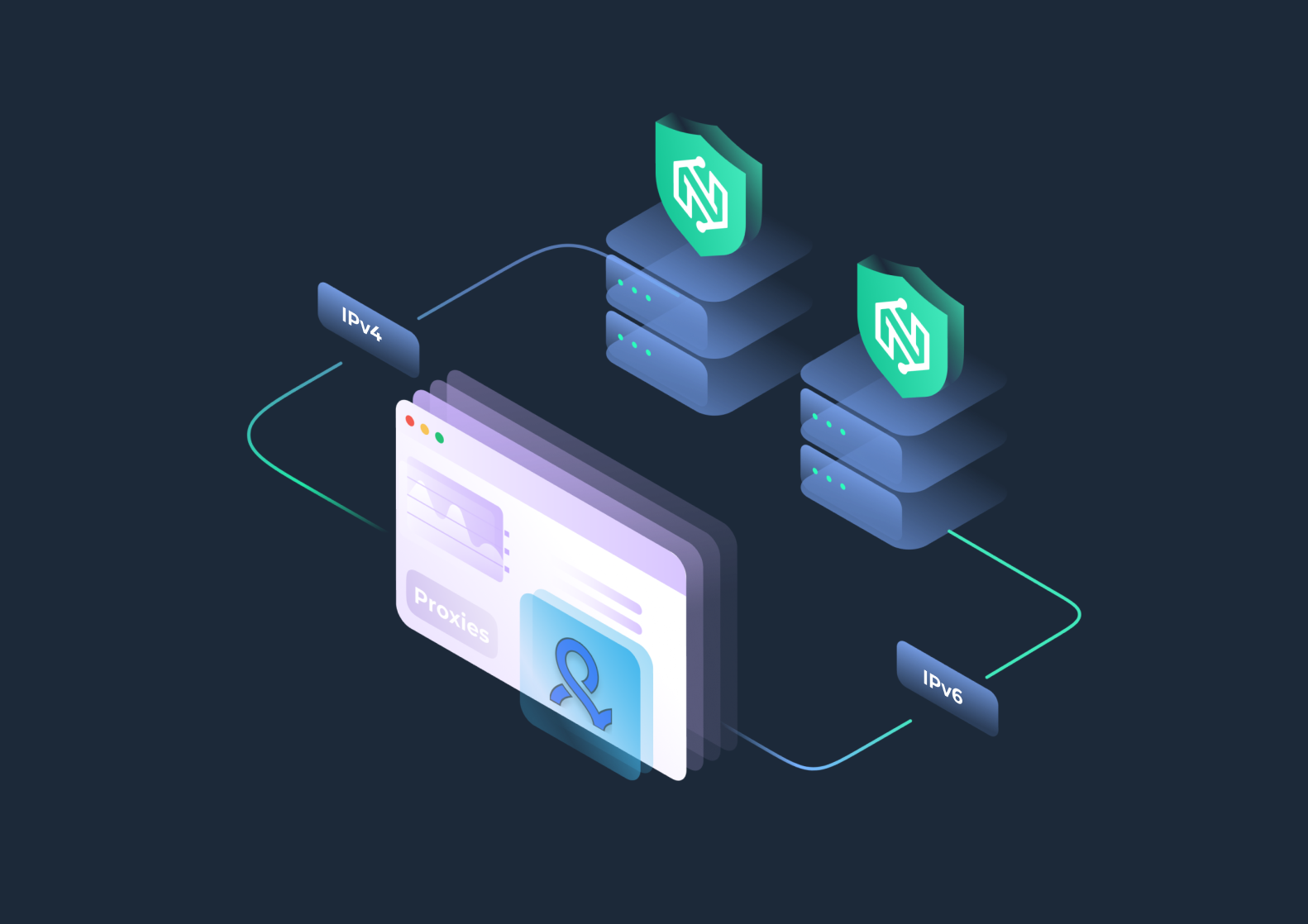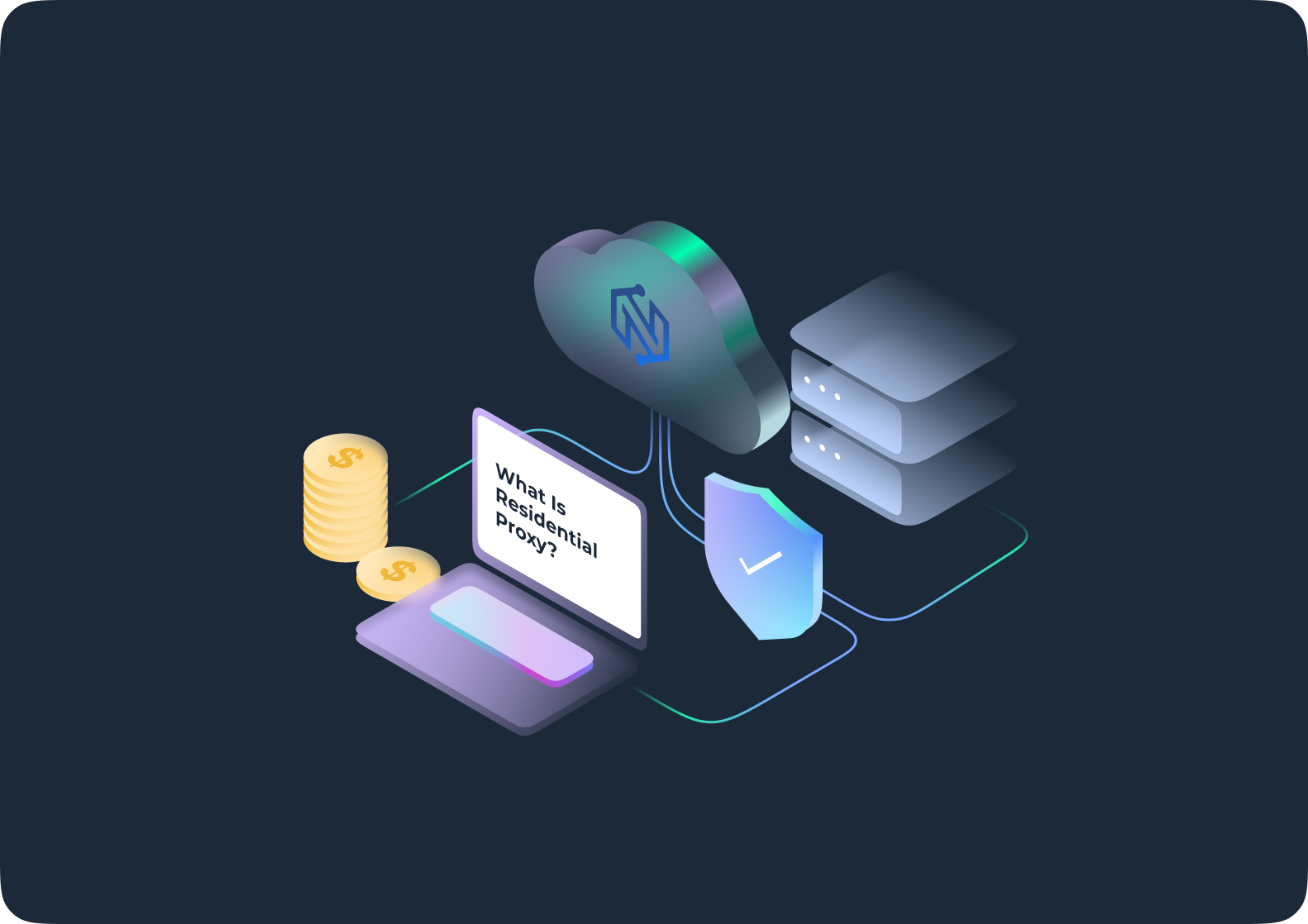IP proxies have become essential for web scraping, automation, ad verification, multi-accounting, and any workflow that requires stable, clean, and geographically diverse IP addresses. But as more users rely on proxy infrastructure, one question keeps coming up: why are IPv4 proxies still so expensive, and why is everyone suddenly talking about IPv6?
The answer lies in availability, cost of maintenance, and a major shift in internet infrastructure that has been slowly unfolding for the last decade. While IPv4 remains the dominant option for compatibility, IPv6 is rapidly growing as a scalable and budget-friendly alternative, especially for businesses that need large volumes of rotating IPs.
In this article, we break down the real reasons behind IPv4 pricing, explore the rise of IPv6, and help you understand which option is right for your use case.
The Scarcity Problem: Why IPv4 Proxies Cost More
Even though IPv4 has been around since the early 1980s, it remains the backbone of most online platforms. But because the total number of IPv4 addresses is fixed, their value keeps rising. Here’s a deeper look at the scarcity issue:
IPv4 Addresses Are Limited
IPv4 was designed with roughly 4.3 billion unique addresses, a number that seemed enormous in the early days of the internet. Today, that pool is almost fully allocated. This scarcity instantly increases the value of available IPv4 blocks, especially those with clean reputations.
- No new IPv4 supply can be created.
- Existing IP ranges are redistributed, not generated.
- Companies treat IPv4 blocks as digital property, increasing their market value.
Growing Demand and Static Supply
Businesses rely heavily on IPv4 for compatibility. Most websites, APIs, and legacy systems still prefer IPv4 traffic. As demand continues rising while supply remains fixed, prices increase.
Current trends driving prices up:
- Businesses hoarding IPs for future use
- Cloud providers buying in bulk
- Secondary brokers inflating prices
- Increasing compliance requirements
Secondary Market Prices Keep Climbing
A huge portion of IPv4 supply is now traded on a secondary market where prices rise annually. Proxy providers must pay high leasing costs, which are passed down to customers.
- Websites trust them more
- They bypass anti-bot filters more easily
- They reduce captcha frequency
- They get fewer bans on sensitive platforms (Amazon, Instagram, PayPal, etc.)
Bonus Insight
If an IPv4 subnet gets abused even once, its value can drop dramatically. Providers spend months warming it up again, which increases operational costs (and eventually the price to the customer).
Operational Costs Behind IPv4 Proxy Pricing
Paying for the actual IP block is only the beginning. Maintaining IPv4 proxies requires constant monitoring, filtering, and management to keep them usable.
Reputation Management
Maintaining clean IPv4 subnets is expensive. ISPs and datacenters monitor traffic strictly, and providers must constantly rotate, warm up, and protect their IPs from blacklisting.
Providers must:
- Monitor traffic 24/7 to detect spam, bots, or suspicious patterns
- Replace damaged or flagged IPs quickly
- Rotate IPs to avoid patterns
- Keep subnets stable and “clean”
High Infrastructure Costs
IPv4 networks require more monitoring and filtering because malicious actors have been abusing IPv4 for years. The overhead is higher compared to IPv6.
Compliance and Regional Requirements
In certain regions (EU, US), obtaining compliant IPv4 blocks with proper ownership and documentation is significantly more complicated and costly.
Tips for Users
To lower costs while using IPv4:
- Choose rotating IPv4 pools instead of static addresses
- Limit use to platforms that strictly require IPv4
- Combine IPv4 with IPv6 for cost efficiency
Why IPv6 is Becoming a Trend
IPv6 proxies are not just a cheaper alternative, they are becoming the new standard for high-volume tasks. The internet is shifting, and IPv6 adoption is growing fast.
Essentially Unlimited Supply
IPv6 offers 340 undecillion addresses—enough to support massive scaling for proxy networks. Because the supply is practically infinite, IPv6 addresses are far cheaper to produce, rent, and rotate.
Perfect for High-Volume Tasks
When your workflow involves scraping large marketplaces, testing ads, or generating millions of requests, IPv6 becomes an extremely cost-efficient alternative.
Modern Websites Are Adding IPv6 Support
A growing number of major platforms have already added IPv6 accessibility. Many others rely on CDNs that support IPv6 automatically.
Major platforms already support IPv6:
- YouTube
- Cloudflare sites
- Amazon services (partially)
Better Performance in Some Regions
Native IPv6 routing can be faster thanks to reduced NAT layers and modernized network setups. This results in lower latency in certain locations.
IPv4 vs. IPv6: When to Use Each
When IPv4 is Better
- Older websites without IPv6 support
- Geo-sensitive platforms (banking, government portals)
- Anti-bot systems that block IPv6 traffic
- Marketplaces with strict checks (Amazon, Ticketmaster)
When IPv6 is Better
- Web scraping at scale
- SEO monitoring
- Captcha-heavy tasks
- Ad verification
- Performance testing
The Shift Toward Hybrid Proxy Setups
Many businesses now use a mix of IPv4 and IPv6 proxies.
A hybrid approach provides:
- Cost efficiency
- High compatibility
- Unlimited scaling
- Minimal bans
- Maximum speed
This trend is especially visible among agencies and SaaS platforms that manage thousands of automated tasks across multiple regions.
Tips for Hybrid Proxy Use
- Always test whether the target website supports IPv6 before choosing your setup.
- Use IPv4 when interacting with accounts, payment pages, or login flows.
- Use IPv6 for scraping, crawling, and high-volume tasks.
- Monitor success rates separately for IPv4 and IPv6 to identify patterns.
NodeMaven: Reliable IPv4 and IPv6 Proxies for Every Use Case
NodeMaven stands out as a provider that understands the reality of the modern proxy market: businesses need both IPv4 and IPv6 options—not just one or the other. That’s why NodeMaven offers a complete proxy stack with premium IPv4 residential, IPv4 ISP, and high-performance IPv6 proxies designed for scale. Whether you’re running large scraping jobs, managing multiple accounts, or testing global content delivery, NodeMaven gives you the flexibility to choose the right IP type for every scenario.
For users who rely on IPv4, NodeMaven provides high-quality, pre-filtered IPs from trusted ISPs and residential networks. These IPv4 pools undergo strict reputation checks, ensuring that the IPs you use are clean, stable, and ready to bypass anti-bot systems on complex websites. With access to millions of geotargeted IPv4 proxies, you can handle compatibility-sensitive tasks without worrying about bans or downtime.
At the same time, NodeMaven also embraces the rise of IPv6. The platform supports massive, scalable IPv6 proxy ranges perfect for high-volume scraping, SEO monitoring, and automated workflows. Because IPv6 pools are large and cost-efficient, you can run millions of requests without the price constraints associated with IPv4.
NodeMaven’s architecture ensures high uptime, fast routing, and automatic proxy refreshing across both IPv4 and IPv6 networks. With flexible PAYG and monthly plans, users can choose exactly how much capacity they need—and scale instantly when workloads grow.
Whether you’re optimizing costs or boosting performance, NodeMaven’s dual-stack proxy infrastructure gives you a complete, future-proof solution.
Conclusion
IPv4 proxies remain expensive because the world has outgrown the original supply of addresses. Their scarcity, high demand, and operational complexity make them valuable—but they’re still essential for compatibility with many websites. IPv6, on the other hand, offers almost unlimited scalability at a fraction of the cost, making it ideal for scraping, automation, and high-volume operations.
As the internet continues shifting toward IPv6 adoption, more companies will rely on hybrid setups, using IPv4 where compatibility matters and IPv6 where scale and efficiency are key. Providers like NodeMaven make this transition seamless, offering strong support for both IP types and giving users the freedom to choose the best solution for each task.
Providers also invest in IP reputation management, monitoring, and compliance, which increases their final price.
Many modern websites and CDNs already support IPv6.
This includes some banking portals, government websites, and legacy systems. For these, IPv4 proxies are required.
• Multi-accounting
• Login flows
• Payment pages
• Platforms with strict anti-bot filters
• Websites that do not support IPv6
• High-volume scraping
• SEO monitoring
• Price & stock tracking
• Ad verification
• Large automated workflows
IPv6 datasets are newer, less saturated, and less targeted by bots — meaning many anti-bot systems still have weaker IPv6 filtering.
• Use IPv4 for compatibility and sensitive actions.
• Use IPv6 for scale and cost efficiency.
This combination gives the highest success rate at the lowest cost.
Services like NodeMaven offer premium IPv4 residential, IPv4 ISP, and large-scale IPv6 proxy pools — letting you choose the best option for your workload and budget.
More websites now support IPv6, making it the long-term standard for scraping, automation, and general internet connectivity.


